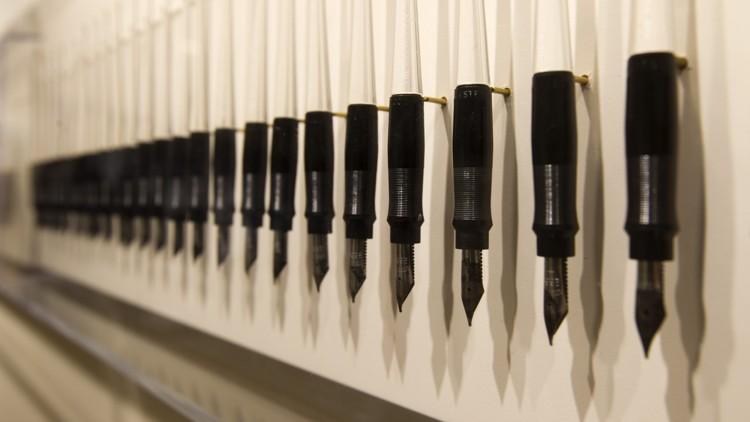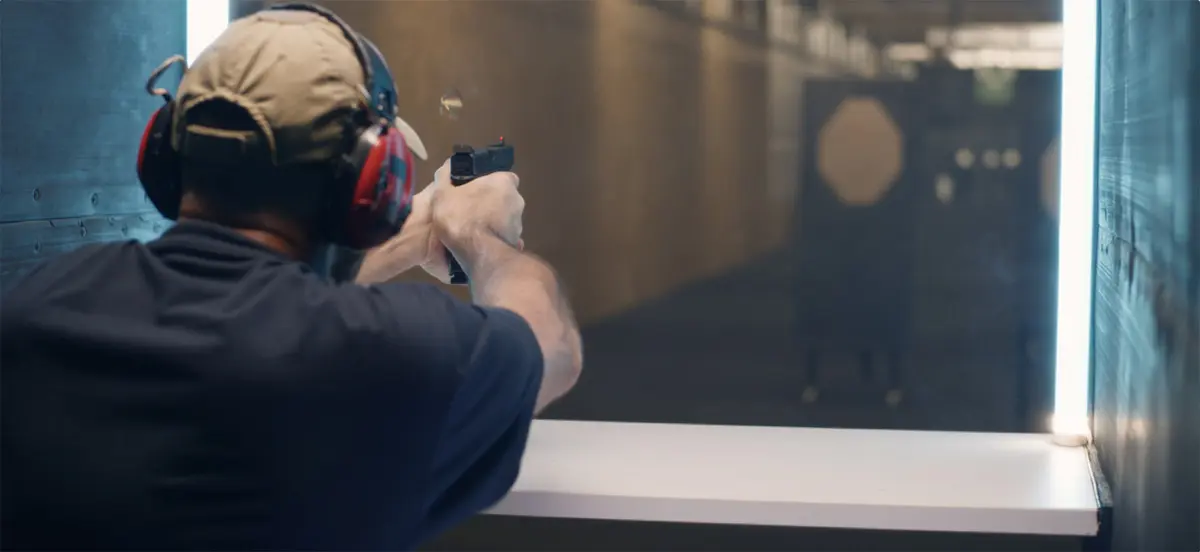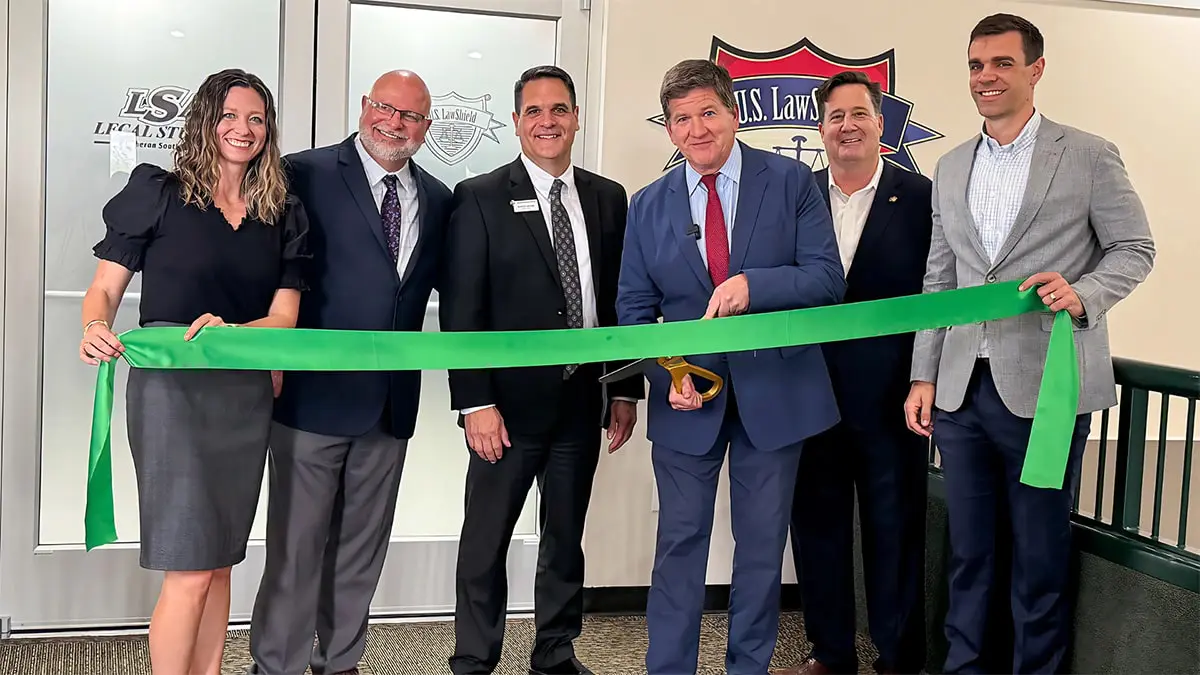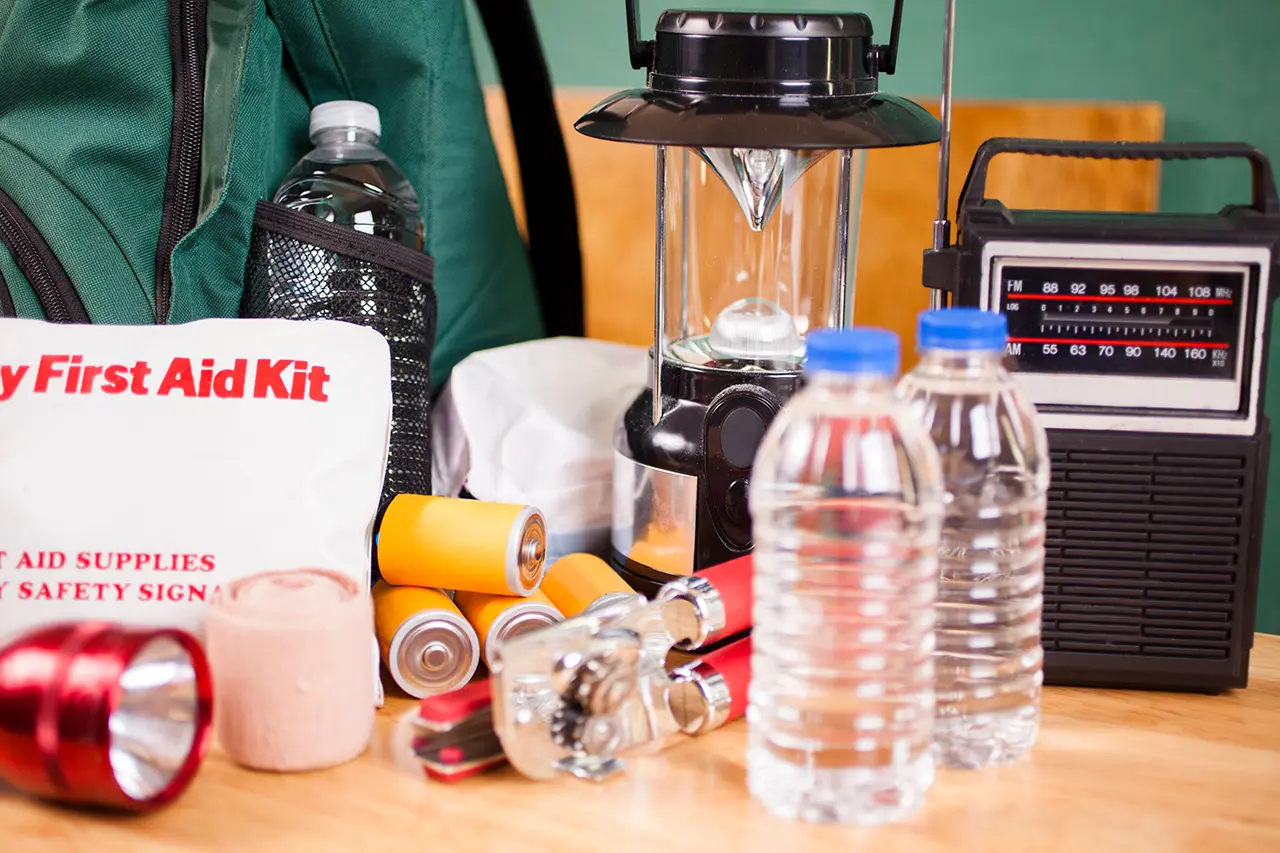
If someone drafted a dictionary for the year 2020, it would undoubtedly include brand new definitions for common words and phrases that we all thought we had a pretty good grasp on. During the COVID-19 period, we have all come to know phrases like “non-essential” and “essential” businesses. How about “social distancing” or those all too familiar “masks” of the PPE (Personal Protective Equipment) variety? We couldn’t forget “public gatherings,” which can be prohibited, limited in size, or restricted in new ways. Some very specific terms have been amplified this year, or shall we say turned sideways, like the measurement of 6 feet, now the prescribed “safe distance” between us.
Many of our freedoms seem to have disappeared right before our eyes. No explanation needed. No permission needed. No votes cast. How could this possibly happen without more involvement from the people of our country? It’s all linked to two words: executive orders.
In this second and final article on the subject of executive orders, we examine state executive orders issued by governors. These have certainly been in the news throughout the pandemic as states have tried to “slow the spread” of COVID-19. While the orders related to the pandemic are expected to eventually expire, there’s an ongoing effort through state executive orders to change legal gun ownership and firearms policies, and this is expected to continue.
The Power of the State
Executive orders in many states are quite powerful in their ability to affect and direct state policy and, in turn, affect the everyday life of the state’s residents. State executive orders may be enforced by all levels of state government. Similar to federal executive orders issued by the President of the United States, governors can also wield substantial unilateral power through their executive orders. State executive orders are common gubernatorial powers used to declare public emergencies (such as a COVID-19 public health emergency), the appointment of state officials, and creation of executive branch commissions or agencies to enact a governor’s policy, which can include “common sense” firearms initiatives.
Plus, the Weight of Law
Governor-issued executive orders may carry the weight and enforcement power of law, just like acts and statutes enacted by state legislatures. In 38 states, executive orders are enforceable the day they are executed and are not subject to any form of review by the state legislature. Then, there are 6 states (Alaska, Colorado, Hawaii, Illinois, Iowa, and Kentucky) that require an executive order to go through a legislative review process. The remaining 6 states (Maryland, Minnesota, Missouri, North Carolina, Utah, and Vermont) have legislative review requirements for specific types of executive orders—usually concerning agency creation. State executive orders are often issued without specified end dates and may persist for many years or even decades after their issuing governor has left office.
Proclaiming a State of Emergency for COVID-19
In March of 2020, the Governor of Iowa, Kim Reynolds, issued one of the first state executive orders in response to COVID-19. Other governors quickly followed suit and issued their own executive orders, using the guidelines set forth by the Centers for Disease Control and Prevention (“CDC”) and guidelines outlined by President Donald J. Trump’s Coronavirus Task Force. Eventually, all 50 states would declare a “State of Emergency” or “Declared Disaster” designed to control and slow the spread of COVID-19.
Controlling our Work, Dining, Shopping, Exercise, Etc.
As of the writing of this article, most states still have some form of COVID-19 executive order in place that is continuing to affect everyday life, such as shopping, eating in a restaurant, going to a bar, working out at a gym, going to a movie theater, and attending places of worship.
All of this suggests that executive orders are quite powerful in many states. Since executive orders are a matter of public record, all states must make them accessible to the public in some form, and you can find your own state’s executive orders enacted in 2020 at The Council of State Governments.
Mayors Seize on and Expand Gubernatorial Orders
Many state executive orders can be adopted by county and city governments who may make modifications based on their needs. For example, on May 29, 2020, Chicago’s Mayor issued Public Health Order No-2020-3, which interpreted and applied the Illinois Governor’s Stay-at-Home Executive Order. It ordered all Chicagoans to stay at home through at least June 3, 2020. It stated: “This is essential to help prevent the further spread of COVID-19 in our city, and to protect our friends, neighbors, and vulnerable Chicagoans.” The order included the following directives (as well as others):
- You are required to stay at home except for essential needs, such as getting groceries once a week or seeking medical care.
- When you must go out in public, you should always stay 6 feet away from others. If social distancing is not possible, wear a face covering.
- You can go outside for brief walks, runs, or bike rides, or to walk your pet, but you can’t gather in groups of 10 or more. That includes no group sports like basketball or soccer.
Finally, the City of Chicago order went on to proclaim, “This order is mandatory – not suggested guidance. We are counting on your good judgment to decide when it is essential to go out. The City of Chicago and Chicago Police Department will enforce the order as needed to keep people safe, including dispersing large groups who are gathered in public places.”
Gun Owner Rights and State Executive Orders
Executive orders have been used to restrict gun rights in several states. Most notably, on September 10, 2019, the Governor of New Jersey issued Executive Order No. 83, which contained a number of broad provisions “to tackle gun violence” and gave sweeping power to executive agencies to control the sale of ammunition and firearms. Similarly, the Governor of Pennsylvania issued an executive order that same year to “eradicate gun violence” and created the Special Council on Gun Violence. Both states effectively changed the law, restricting the rights of their citizens to own guns without having to go through the ordinary legislative process.
Another example of governors using their executive power to limit the rights of gun owners occurred earlier this year, when the Virginia governor declared a “disaster” to ban guns from a pro-gun rally. The rights of Americans are being challenged frequently by the elected officials we trust to protect the Constitution. While the varying levels of the executive branch have tools at their disposal, citizens still have the ability to vote these officials out of office.
The good news, the authority of governors to encroach on gun rights during a state of emergency has been curtailed in numerous ways. In 2006, Congress passed the Disaster Recovery Personal Protection Act of 2006 which modified federal law to prohibit federal agents from confiscating firearms during an emergency or major disaster. Although this prohibition does not apply to states or state agencies, many states followed suit and enacted their own legislation against such encroachments. States such as Texas and Florida passed laws that prohibit the confiscation of firearms during a declared disaster or emergency. Not all state legislatures have followed suit and many states still allow local or executive authorities to restrict the sale or transportation of firearms or ammunition. In the end, as voters, we must realize how important it is to elect state legislators who will help in the curtailment effort.
Strong Policy Tool of Government
Throughout 2020, we’ve all witnessed first-hand the power of the executive order during a disaster declaration or state of emergency. Governors have declared disasters over strange things. Further, we’ve seen governors seize a “moment of opportunity” to declare a disaster, issue an executive order, and then tie in their policy objectives regarding gun right restrictions, such as when the Virginia governor declared a “disaster” to ban guns from a pro-gun rally. Executive orders are a powerful tool that may look vastly different depending on the particular governor, and even local mayors, as they enact their desired policies. It’s our job as voters to research all candidates for elected office to understand their position on gun control. Your votes can and will affect American gun rights!
For more information about state executive orders, contact U.S. LawShield and ask to speak to your Independent Program Attorney.
About the Photo
We conclude this 2-part story with our cover photo and where we started, at the Federal Executive level. This wall of presidential pens is featured at the LBJ Presidential Library in Austin, Texas. They were used to sign legislation in those “Great Society” years where the President submitted and Congress enacted more than 100 major proposals, such as the Voting Rights Act and the Civil Rights Act. LBJ also signed 325 executive orders or presidential proclamations.
The preceding should not be construed as legal advice nor the creation of an attorney-client relationship. This is not an endorsement or solicitation for any service. Your situation may be different, so please contact your attorney regarding your specific circumstances. Because the laws, judges, juries, and prosecutors vary from location to location, similar or even identical facts and circumstances to those described in this presentation may result in significantly different legal outcomes. This presentation is by no means a guarantee or promise of any particular legal outcome, positive, negative, or otherwise.





It’s scary and amazing to see what is happening to America and they are targeting our 2nd ammendment . I’m so glad I joined US Law Sheild keeping me up to date among other benefits. Keep up the good work.
Wonderful article. Thank you for shining light on otherwise hidden policies and agendas by our local, state and federal governments. Yet another benefit to my US LawShield membership. Thank you for keeping us abreast of what’s going on in our country.
I want to know how we forbid our elected officials from becoming tin plated little dictators. From the Supreme Court’s in-actions, I conclude that we don’t have any rights whatsoever. Nice to know.
So, before we vote, we ask, “What do you think about the 2nd Amendment? Do you support it? What is your stand on the police? Would you ever consider defunding the police? How important is it to you for the citizens of this state to legally bear arms?” etc. We can’t vote for anyone who does not support the Constitution completely.
Exactly the questions that need to be asked.
Because of this “plandemic” I have learned to be more cautious about who I vote for in the future. So much has been revealed about the politicians that I have helped put into office. Texas desperately needs to make a serious change to those who have the power to take away our way of life, liberty and God given rights by the simple, careless swipe of a pen. Our State must have freedom loving, Constitutional minded citizens in office. We don’t need the same old money snatching politicians that keep their seats because we are too lazy to go to the polls to vote. I will be only be casting votes for non-career, pro-constitution, grass-root candidates from this point forward. I want leaders that stand by the same principles that I have to adhere to. We don’t need a follower as our current Governor has proven himself to be (ref. Jailed salon owner Shelly Luther in which AG Paxton led the charge for), or the following of Florida’s Gov. DeSantis that proposes strict new protesting penalties. Why can’t our Governor do some leading? Why can’t he lead when it comes to push for constitutional carry for Texans? He has also chastened us as if we are his own small children that we must give up our freedom and wear a mask as a government mandated feedbag so that we may feast on our own waste then thank him for a great meal and say, “thank you sir, may I have another?”. Why not reopen Texas instead of killing small businesses while letting big box stores stay open? Why do we have to distance ourselves when we need herd immunity? Maybe they need us weakened, naked and afraid for better control. Texans and my fellow Americans, we need to wake up and get out to vote to save our country (YES, Texas is a REPUBLIC) and nation before it is too late. We are on a dangerous precipice right now so let’s get it right by voting for the right people to lead us by OUR consent, make sure these people are strict constitutionalists and let’s hold their feet to the fire to take our freedom back!
To the comment by Judy Horstmann, I’m with you! However, what good does it do? They say what they want to get elected, and then do what they want once elected. The system needs to be changed. If you don’t do what you said you would do during your election campaign then you get tared, feathered, and tossed out of office! I’ll vote for it.
The only way to stop this nonsense is to vote! People please know the one that you are voting for there’s a lot of wolves in sheep’s clothes running for your rights!!
Just remember you have no one to blame but yourself if you don’t fight back. These people are testing our will to defend ourselves and see just how much bullying we will take. Time to push back hard and when the time comes decide what is more important you and your family and property or these punks and cowards who criminal Governors and Mayors who permit this type of anarchy. I for one am ready and willing to put it on the line and fight to protect my family, friends, property and my current way of life. How about you?
The NRA can provide information as to how and what stance a candidate has on the 2nd amendment. The NRA often grades them on their comments. Also, check out the candidates own website and how they have voted in the past, if applicable.
I disagree that the loss of our rights has anything to do with executive orders. The fact is that the governors of the various states have been given the authority to use the executive order when a case of emergency arose. It would seem that the Covid-19 meets the “emergency” situation, but that is where it ends – this has nothing whatsoever to do with executive orders, it is in part the lack if people paying attention to what their legislators are doing and in part on the basic instincts of the politicians involved in carrying out these executive orders.
I ask you: what were the politics of all of the governors who made egregious executive orders and continued to enforce them even after they saw the detrimental effects? Every last one of them is a Democrat, while the Republican governors made less restrictive orders and are trying to make things less invasive (in most cases). The problem areas are pretty much limited to the blue states, at least, the more egregious ones. You can easily see the difference between CA and South Dakota or even TX for example.
“…while the Republican governors made less restrictive orders and are trying to make things less invasive (in most cases) “
IN EVERY CASE-
More invasive vs Less invasive still = invasive
Voting for the lesser of two evils = evils by different degrees is still evil
Giving up just a little of our God given rights and freedom for “safety and security’ = incremental permanent loss of our rights and that = rights are gone forever.
I’m not willing to do that anymore. Our Patriot forefathers suffered great loss to give us our independence. It’s time for us to draw a line in the sand.
I’m a bit confused as to what “Citizen” of A State exactly is! I am an American Citizen. A number of years ago I lived in Arizona and was considered a “resident” of that State. I was not a “Citizen” of Arizona! When I took a foreign job in the Midle East, I established residency there. I was still a “citizen” of the United States of America, but was no longer a “Resident”! I paid my Federal” taxes to the USA and I contributed to the reitrement system of the country that I was living and working in! I no longer had any rights or claims with the State of Arizona, as I was no longer a resident of that state. In this situation, I was still subject to the laws of the USA and the county in which I worked! How is it that the Governor of a state can issue “Executive Ordeers” affecting “residents” of a state but who are not considered “citizens” of that state? They are still Citizens of the “USA”! Citizenship is “Federal” but not the “State”. There is a tremendous difference between “Citizenship” and “Residency”!